Credits:Biovision-Infonet
Smoker
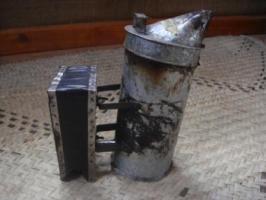
(c) S. Fontana, Biovision
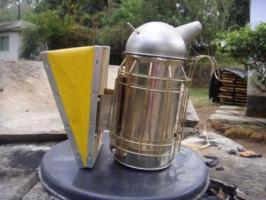
(c) S. Fontana, Biovision
Most of the equipment needed for small-scale bee-keeping can be made at village level. It can be helpful to import basic equipment to serve as prototypes for local manufacturers. For practicing on a large scale, some specialized equipment will probably need to be bought such as honey gates, special filtering gauze, and gauges to determine honey quality.
A beekeeper uses a smoker to produce cool smoke to calm the bees. The smoker consists of a fuel box containing smoldering fuel (for example dried cow dung, cardboard, dried bark or grass) with a bellows attached. The bee keeper puffs a little smoke near the entrance of the hive before it is opened, and gently smokes the bees to move them from one part of the hive to another.
Bee brush
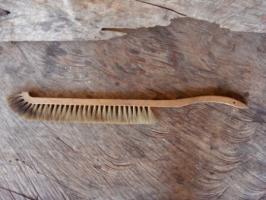
(c) S. Fontana, Biovision
The bee brush is for brushing bees from combs when harvesting honey or when it is necessary to gently remove bees. Using a feather is also a good alternative.
Hive tools
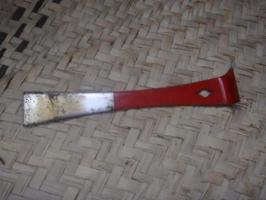
(c) S. Fontana, Biovision
The hive tool is a handy piece of metal which is used to pry open supers, scrape off odd bits of bees wax, separate frame-ends from their supports and so on. They can be made from pieces of flat steel, and screwdrivers are often used. It is possible to use an old knife for the job but knife blades tend to be too flexible and give too little leverage.
Protective clothing
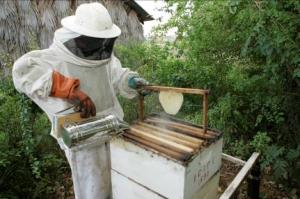
(c) P. Luethi, Biovision
Good protective clothing gives beginner beekeepers confidence, but more experienced beekeepers find that too much protective clothing makes it difficult to work sufficiently gently with bees, and it is very hot to wear. Always wear white or light coloured clothing when working with bees – they are much more likely to sting dark coloured clothing. It is most important to protect the face, especially the eyes and mouth. A broad rimmed hat with some veiling will be good enough. Individual items of clothing must be impermeable to bee stings, and every joint between them must be bee tight. Rubber bands can prevent bees from crawling up trouser legs or shirt sleeves. Some people find that a good way to protect their hands is to put a plastic bag over each hand, secured at the wrist with a rubber band.